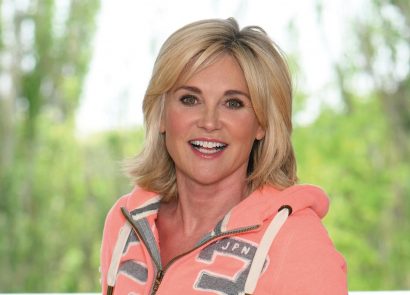Moles have a bad reputation in the world of health. The very mention of them breeds connotations of skin cancer and sends many of us into panic mode. But most moles are perfectly harmless so, as we prepare to jet off to sunnier climates this summer, it’s time to educate ourselves on what is and isn’t normal.
What is a mole?
“A mole is a grouping of colour cells (melanocytes) within the skin,” explains dermatologist Dr Saquib Bashir (doctify.co.uk). “We all have colour cells spread evenly throughout our skin, which is what gives us an even skin tone. When the colour cells group together, the colour looks more intense and is seen as a mole on the skin surface.”
How does sunlight affect them?
When the sun comes out we tend to reveal more skin, which means moles or abnormalities that are usually covered up are exposed. “UV rays from sunlight are the main cause of skin cancer in the UK,” explains Dr Ross Perry (cosmedics. co.uk). “The sun’s rays can damage the DNA in your skin and the build-up of damaged DNA can cause cells to start growing out of control, which can in turn lead to skin cancer. This doesn’t happen immediately – the damage can appear years after sunburn or exposure to the sun – which is why we stress the need to be vigilant about changing moles.”
Yet with malignant melanoma (the type of skin cancer than can arise from coloured moles) being the ninth most common cancer in Europe, with more than 100,000 new cases diagnosed in 2012, it’s clear that we need to be more proactive about our skin. Recent research by Bupa Health Clinics (bupa.co.uk) revealed that only 14 percent of the population regularly check their moles to see if they’ve changed. And, even worse, only 23 percent of people have seen a GP or dermatologist immediately when they have noticed a change.
What should I look out for?
“A normal mole will be symmetrical, have a smooth border, an even and acceptable colour, be a standard size and be fairly stable (not changing or presenting in an unusual way),” says Dr Ross. “If you have a mole which is looking different from the others, then you’re right to be concerned. Unusual and suspicious characteristics include a lop-sided shape, an uneven border, odd colouration, very large dimensions or any changes such as fast growth, bleeding or itching. We call it the ‘ugly duckling’ sign – moles that just aren’t like the others and don’t seem quite right.” When you have spotted any irregularities, it’s crucial to discuss concerns with a dermatologist or a doctor.
“Early detection is imperative to curing skin cancer,” says Dr Susan Mayou, consultant dermatologist at the Cadogan Clinic (cadoganclinic.com). “A person with a melanoma of less than 0.75mm thickness can expect to have a 95 percent cure rate. By checking your moles on a monthly basis, in addition to annual mole checks with a dermatologist, you will be more familiar with your skin and be better equipped to identify subtle changes.”
Dr Susan recommends checking your moles at home in a room with good lighting and using both a full length mirror and hand mirror to ensure you can see all areas of your body. Also, use a ruler to take measurement of the size of the moles, and take photos so you can document any changes in them and refer back to it over time if you’re worried.
How can I be skin safe over summer?
“The use of sun cream is vital for skin protection over the summer months,” says consultant dermatologist Dr Sharon Wong at London Bridge Hospital (hcahealthcare.co.uk). “It helps to protect against UVA and UVB rays that cause burning on the surface of the skin, as well as rays that penetrate deeper and cause the skin to tan. Both types of ray can damage the DNA in the skin, and increase the risk of skin cancer. Unfortunately, there is still a perception within our society that having a tan looks healthy. Due to this, many people apply low factor sun cream when out in the sun, or don’t apply any at all, in order to bronze their skin. I always advise my patients to use between factor 30-50 sun creams and to apply large amounts, especially when they are in hot climates. Also, avoid sunbeds at all costs. The UV rays from sunbeds can damage the DNA in your skin cells, and over time this damage can build up to cause skin cancer. Fake tan products are a great option for people who want a darker skin tone, without causing long-lasting damage.”
The A-G guide to checking your moles
Dr Unnati Desai from Nuffield Health Dermatology (nuffieldhealth.com) has these tips for examining your skin
A is for asymmetry
Normal moles or freckles are completely symmetrical. If you were to draw a line through a normal spot, you would have two symmetrical halves. In cases of skin cancer, spots don’t look the same on both sides.
B is for border
A mole or spot with blurry and/or jagged edges is a worry.
C is for colour
A mole that is more than one hue is suspicious and needs to be evaluated by a doctor. Normal spots are usually one colour. This can include lightening or darkening of the mole. Melanoma cells usually continue to produce melanin, which accounts for the cancers appearing in mixed shades of tan, brown and black.
D is for diameter
If it is larger than a pencil eraser (about 1/4 inch or 6mm), it needs to be examined by a doctor. This includes areas that do not have any other abnormalities (colour, border, asymmetry). But don’t be fooled by size alone – it can be smaller.
E is for elevation/evolving
Elevation means the mole is raised above the skin and has an uneven surface. Evolving means changing in size, shape, colour.
F is for from firm to palpation
This is when any of your moles change from a firm consistency to a softer, spongier consistency.
G is for growing progressively over one month
A mole should remain a consistent size. If your mole continues to grow over more than a month, speak to your doctor.






















